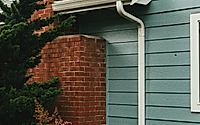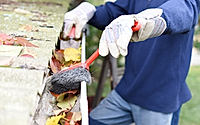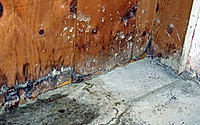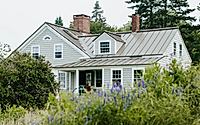Quick Home Fixes To Avoid Costly Water Damage Repairs
Water damage can wreak havoc on your home and wallet. The consequences of water damage can be significant, ranging from ruined floors and walls to costly repairs. However, with proactive measures and quick home fixes, you can prevent water damage and save yourself from expensive repairs. This article will explore tips and solutions to keep your home dry and secure.
1. Inspect Your Roof Regularly
Inspecting your roof regularly is crucial to avoid costly water damage repairs. Roof leaks can result in extensive damage to your home’s interior and structure. Look for loose or damaged shingles, cracked flashing, or any signs of wear and tear. Addressing these issues promptly can prevent water from seeping into your home.
2. Clean Your Gutters
The cost of gutter guards may seem excessive, but they can be a valuable investment in preventing water damage. However, regular gutter maintenance is crucial if you’re looking for a more budget-friendly option.
Clogged gutters can cause water to overflow and seep into your home’s foundation or walls. Ensure your gutters are clean and free from debris, particularly during the fall when leaves tend to accumulate.
3. Seal Windows And Doors
Water can easily infiltrate your home through gaps and cracks around windows and doors. To avoid this, inspect these areas for any openings that need sealing. Use weatherstripping or caulk to seal gaps, ensuring a tight seal that prevents water from getting in. This simple fix can save you from potential water damage and improve your home’s energy efficiency.
4. Maintain Proper Grading
Ensure that the ground around your home is properly graded away from the foundation. Improper grading can lead to water pooling around your home’s base, increasing the risk of water damage. Sloping the ground away from your home will direct rainwater away from the foundation, reducing the chances of water seepage.
5. Upgrade Your Sump Pump
If your home has a basement, a sump pump can be a lifesaver in preventing water damage. However, an outdated or malfunctioning sump pump can leave your basement vulnerable. Consider upgrading to a more reliable and efficient model. Regularly test your sump pump to ensure it’s in proper working condition, especially during heavy rain or snowmelt seasons.
6. Inspect Your Plumbing
Leaky pipes and plumbing fixtures can cause water damage over time, even if it’s not immediately visible. Regularly inspect your plumbing system for any leaks or drips. Fix any issues promptly and consider installing water leak detectors to catch potential problems early, saving you from costly repairs and high water bills.
7. Maintain Your Landscaping
Landscaping can either help or hinder your efforts to prevent water damage. Plant trees and shrubs away from your home’s foundation to prevent their roots from damaging your house’s foundation or causing soil erosion.
8. Address Condensation
Excess moisture in your home can lead to water damage and mold growth. To prevent condensation, ensure proper ventilation in bathrooms and kitchens, use dehumidifiers in damp areas, and insulate cold surfaces like windows and pipes to reduce moisture buildup.
9. Insulate And Ventilate Attics
To prevent ice dams and roof leaks in winter, it’s crucial to have proper insulation and ventilation in your attic. Make sure your attic is adequately insulated and well-ventilated to maintain a steady roof temperature, thus preventing the accumulation of ice and snow.
10. Check Your Appliances
Appliances like washing machines, dishwashers, and water heaters can develop leaks over time. Inspect these appliances regularly, checking for signs of moisture or water accumulation around them. Replace worn-out hoses or connections to prevent leaks that could lead to costly water damage repairs.
11. Regularly Clean And Inspect Your Downspouts
In addition to cleaning your gutters, remember to pay attention to your downspouts. These vertical pipes carry rainwater from the gutters down to the ground and away from your home’s foundation. Over time, downspouts can become clogged with debris, leaves, or even small animals. When they are blocked, rainwater can overflow and cause water damage.
To prevent this issue, inspect your downspouts and remove any obstructions. Consider installing downspout extensions to ensure water is directed far away from your home, preventing it from pooling near the foundation.
12. Consider Exterior Waterproofing
If you live in an area with a high water table or have a history of water infiltration in your basement, exterior waterproofing can be a long-term solution. This involves excavating around your home’s foundation and applying a waterproof coating or membrane. It creates a barrier that prevents water from penetrating the foundation walls.
While exterior waterproofing can be a substantial investment, it provides lasting protection against water damage, especially for homes with chronic basement issues.
13. Invest In Whole-House Water Filtration System
External factors don’t always cause water damage. Sometimes, issues can arise from within your home’s plumbing system. One way to protect against this is by installing a whole-house water filtration system. It improves the quality of your tap water and helps prevent corrosion and buildup in your plumbing, reducing the risk of leaks and costly water damage repairs.
14. Monitor Your Basement
Regularly check your basement for any signs of water intrusion, such as dampness, mold, or a musty odor. If you notice any issues, address them promptly with basement waterproofing to prevent further damage.
Conclusion
Protecting your home from water damage is a proactive step that can save you money and stress in the long run. By implementing these tips, you’ll be well-prepared to safeguard your home against water-related disasters. Remember, regular maintenance and preventive measures are crucial to avoid the financial burden of water damage repairs while ensuring the safety and security of your home.
- by Matt Watts







